
When it comes to being filmmakers, we often find ourselves using a literary device without even knowing it. And for many people, I bet it’s an allusion. So much of modern film and TV is referential because we’re inspired by the generations that came before. While some of this is a pastiche, the vast majority is done via allusion.
But what does “allusion” mean? And how can you use it in literature, film, and television?
Today, we’re going to go over what an allusion is. We’ll find the definition, give examples, and explore allusions in literature from people like Charles Dickens, and other authors. Plus, allusions are very popular in film and TV—from Jerry Seinfeld to Kevin Smith to Quentin Tarantino, they seem to be everywhere. We’ll look at how they’ve helped build story, character, and shape modern cinema.
Let’s get started.
What is Allusion?
www.youtube.com
What Is an Allusion in Literature, Film, and Television? (Definition & Examples)
Storytelling is a very special and unique monster to tackle. You need to have a bunch of tools at your disposal to do the best work. And a literary device like allusions is really helpful. Allusions in films are one of several different things that literature and novels have in common with screenplays.
Allusion Definition
An allusion is a figure of speech in which something unrelated is referred to, so the audience can make the connection. Like when someone says, “Chocolate is my Kryptonite,” they are alluding to Superman and how Kryptonite renders him weak and unable to fight back.
There are two types of allusions, internal and external.
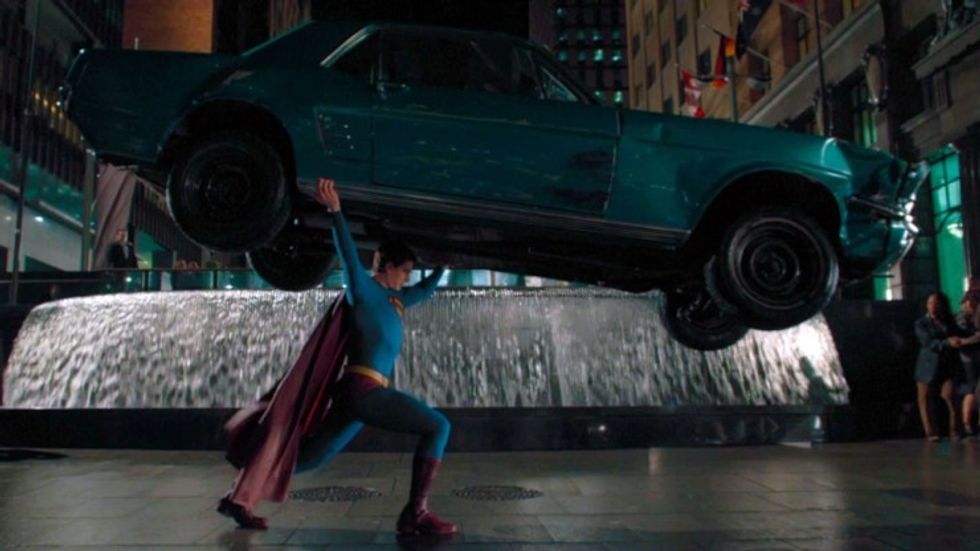 ‘Superman Returns’
‘Superman Returns’
Credit: Warner Bros.
Internal Allusion
An internal allusion is when a writer references an idea, figure, other text, place, or event that originates from something that happens earlier in the text.
Think of this as an in-person event. It refers back to something already mentioned in the story. For example, we might call this a plant and payoff, since we are bringing back something.
External Allusion
An external allusion is when a writer references something outside of the text or situation, it is called an external allusion.
Like if you reference The Wizard of Oz when you go somewhere new and say, “We’re not in Kansas anymore.”
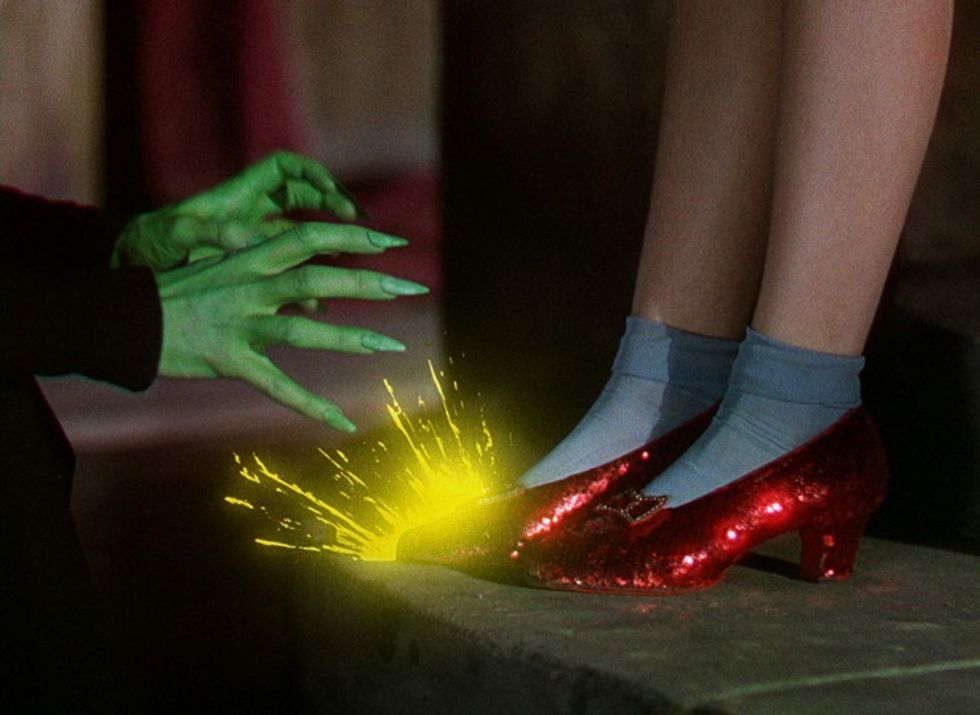 ‘The Wizard of Oz’
‘The Wizard of Oz’
Credit: MGM
The Four Types of Allusions
There are four subcategories of these two main kinds of allusions.
- Historical – An allusion to a historical event or time period.
- Mythological – An allusion to a mythological figure or cultural story.
- Literary – An allusion to a literary text or character or author.
- Religious – An allusion to a religious text, story, character, or figure.
Why Do Writers Use Allusion?
Using a literary allusion in your writing is an incredible tool for screenwriters and authors. It can add extra context to a scene, give a deeper meaning, and even let the reader feel “in the know” when you reference something else they understand. You can also use it to pay tribute to something that came before.
There are many ways to “wink and nod” at other writing.
Think about if you’re writing a paper on a director you like, say Brian De Palma. You can liken some of his stuff to being Hitchcockian, thus alluding to his work being like Hitchcock. In this way, you have put his name next to the master of suspense, creating a validity to his work that may not have existed with a viewer unfamiliar with his other works.
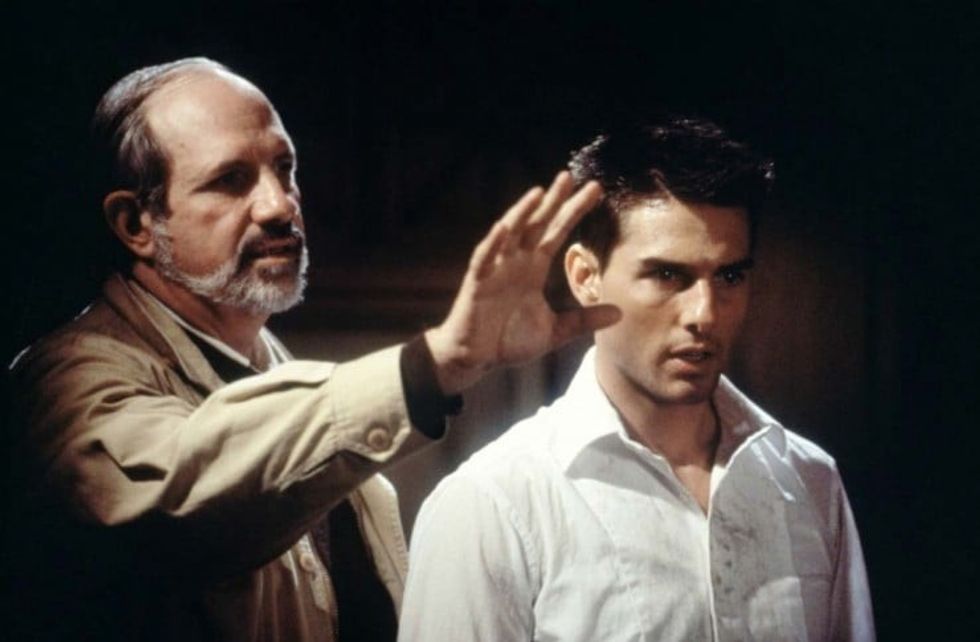 Brian De Palma on ‘Mission: Impossible’
Brian De Palma on ‘Mission: Impossible’
Credit: Paramount Pictures
Allusion in Literature
In literature, allusions are very common. Like we said above, they are implied or indirect references to a person, event, or thing, or a part of another text. The secret behind allusions is that they are reliant on the assumption that the audience will be able to connect those things based on their taste or the popularity of the subject. You can also create a shorthand for the reader to understand your work or themes in relation to another.
I think a few examples will help us suss this out further.
Allusions in Literature Examples
We mentioned Charles Dickens earlier, so let’s find allusions to his works. People will often refer to novels or TV shows as Dickensian, reminding people of the author. But there’s more than that. Think about how common it’s become to call someone a “Scrooge.” That’s an allusion to Dickens’ A Christmas Carol, where Ebeneezer Scrooge was a cheapskate and a miser who hated Christmas. When you call someone by the character’s name, you are alluding to a previous work to describe someone else.
Think about how many times you’ve called someone a “real Romeo” and forgotten that you were alluding to Romeo and Juliet by William Shakespeare.
Chances are, you’re reading about allusions and using them every day without knowing it. Like when you read this article, you probably opened a real “Pandora’s box” of information. See, just saying that is an allusion to one of the Greek myths of Pandora, who got curious and opened a box, releasing monsters onto the world.
There are so many examples of these out there. Many become part of the cultural lexicon because of popular works like the Bible.
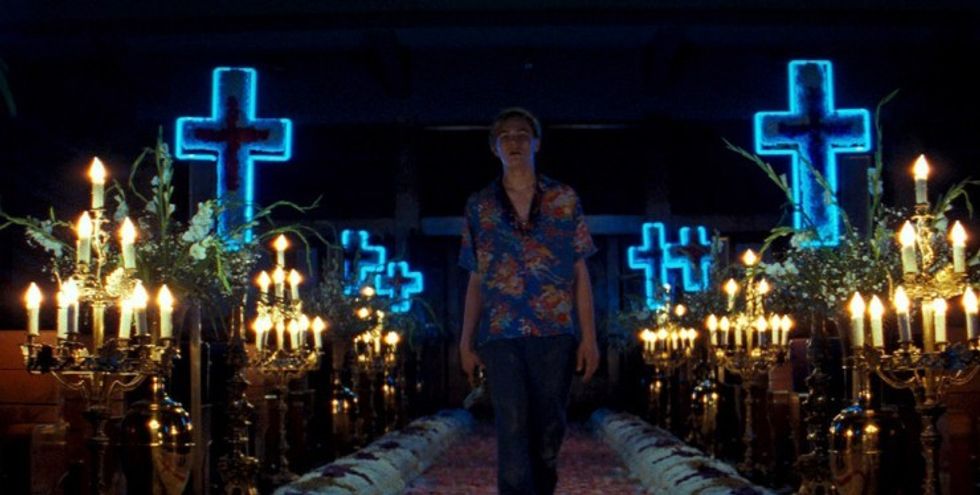 ‘Romeo + Juliet’
‘Romeo + Juliet’
Credit: 20th Century Fox
Biblical Allusions
You might make an implied or indirect reference to a biblical allusion every day and forget about it. Think about it. Maybe you say something is a “David and Goliath” scenario or maybe you call someone your “savior.” What about the Adam and Eve story? We’ve all talked about something being like the apple or even calling a lush place a “Garden of Eden.”
Biblical mythology is very popular for allusions since these allusions usually contain deeper thematic meaning.
The Bible might be the source of allusions, helping spread the format worldwide as the stories from it grew more and more popular. Now, as mediums change, we find these types of devices inside films and TV shows.
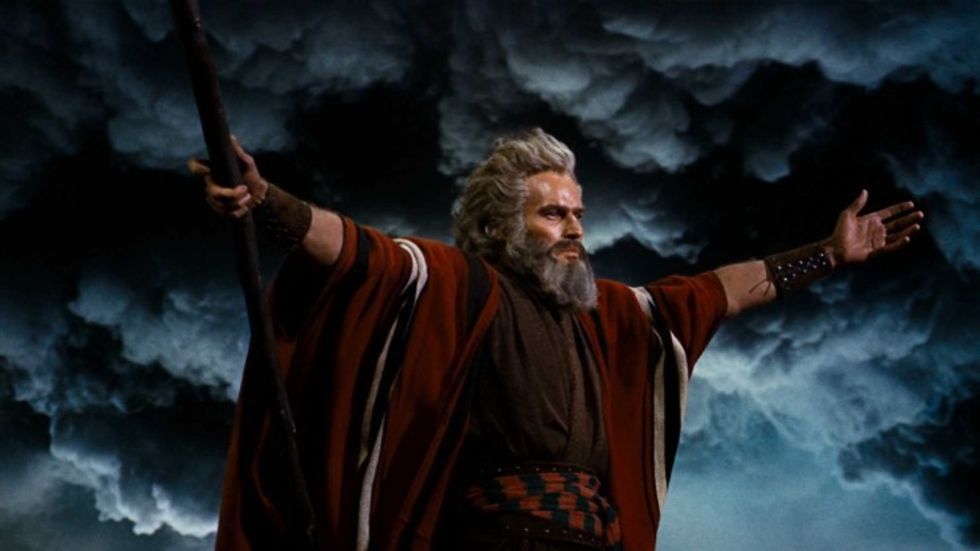 ‘The Ten Commandments’
‘The Ten Commandments’
Credit: Paramount Pictures
Allusion in Film and TV
There are entire genres of films dedicated to allusions, like satire and parody films. We’ve also seen allusion be a distinct style of filmmaker works, like in dialogue and storytelling.
Kevin Smith‘s Clerks contained a famous monologue about things happening in the Star Wars world. And Tarantino made Inglourious Basterds, using the plot to allude to the Dirty Dozen.
Let’s look at a few other examples in movies.
Allusion in Film and TV Examples
When it comes to film and televisions, this is where allusion came into our households weekly. Think about parody movies like Airplane and Scary Movie. They are built on allusions to disaster movies and horror movies.
Or what about a movie like Shrek, which contains scenes that allude to The Matrix, The Lord of the Rings, and even other fairy tales?
How many times have you heard characters allude to Martin Luther King when they’re talking about having a dream?
How about in storytelling structure? Well, in a show like Breaking Bad, they organize a simultaneous killing of drug lords across different prisons, alluding to something similar from The Godfather‘s baptism scene.
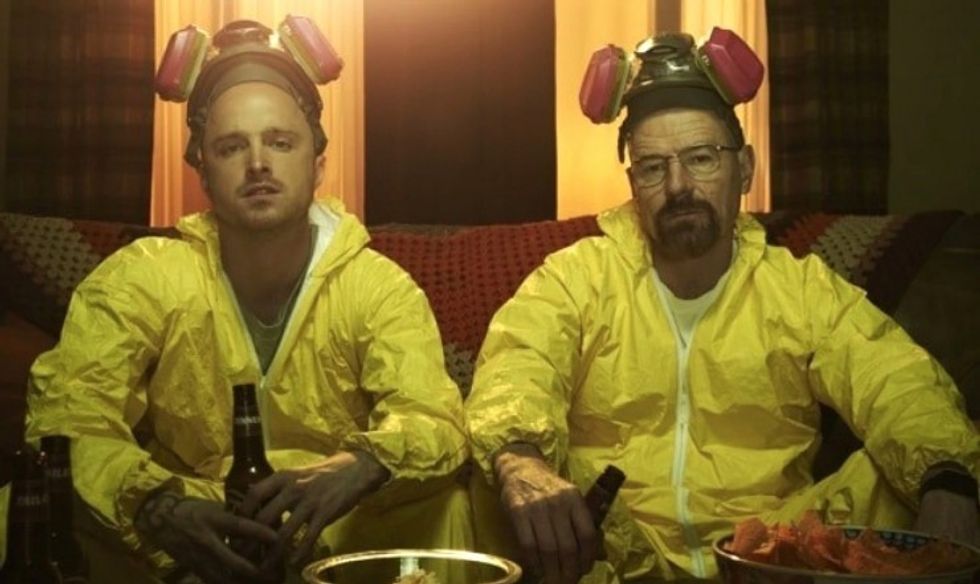 ‘Breaking Bad’
‘Breaking Bad’
Credit: AMC
Summing Up “What Is an Allusion in Literature, Film, and Television? (Definition & Examples)”
As you can see, allusions in literature, film, and television are very commonplace. From Greek mythology to literary allusions in modern cinema, this device has grown incredibly popular. While allusions in literature are where things began, the internet has allowed people across the world to have so much access to pop culture and decreased the need for explanations that people use allusions to explain things more than ever before. They’re part of everyday speech whether we like it or not.
Every single reference matters. And no matter the original source, popular culture depends on these to connect with audiences.
Let us know some of your favorite literary, film, and TV allusions in the comments.
Author: Jason Hellerman
This article comes from No Film School and can be read on the original site.
